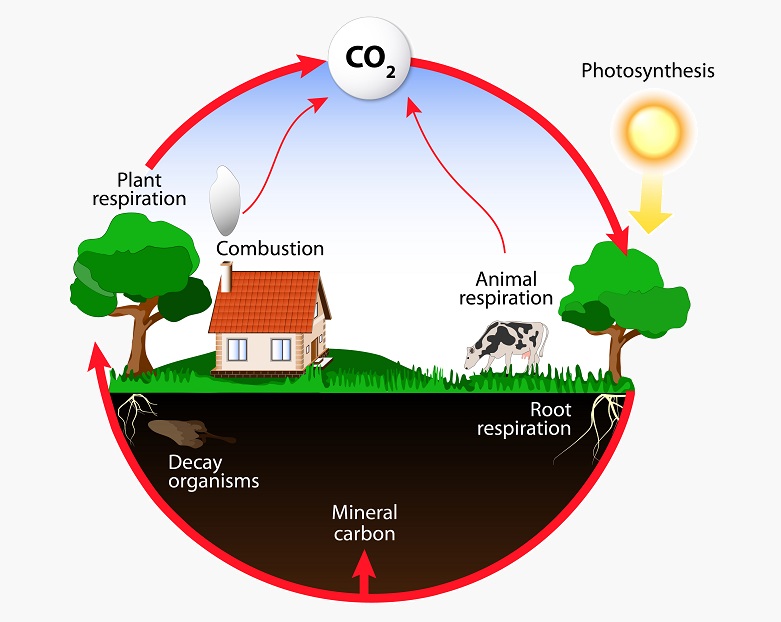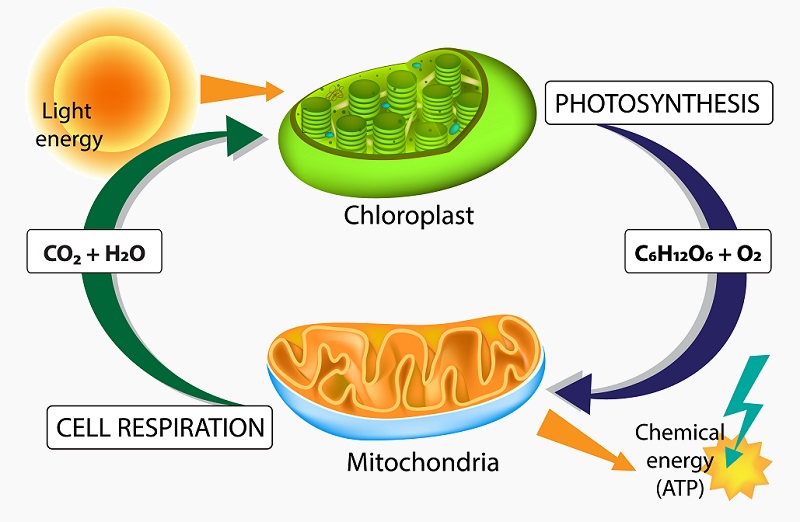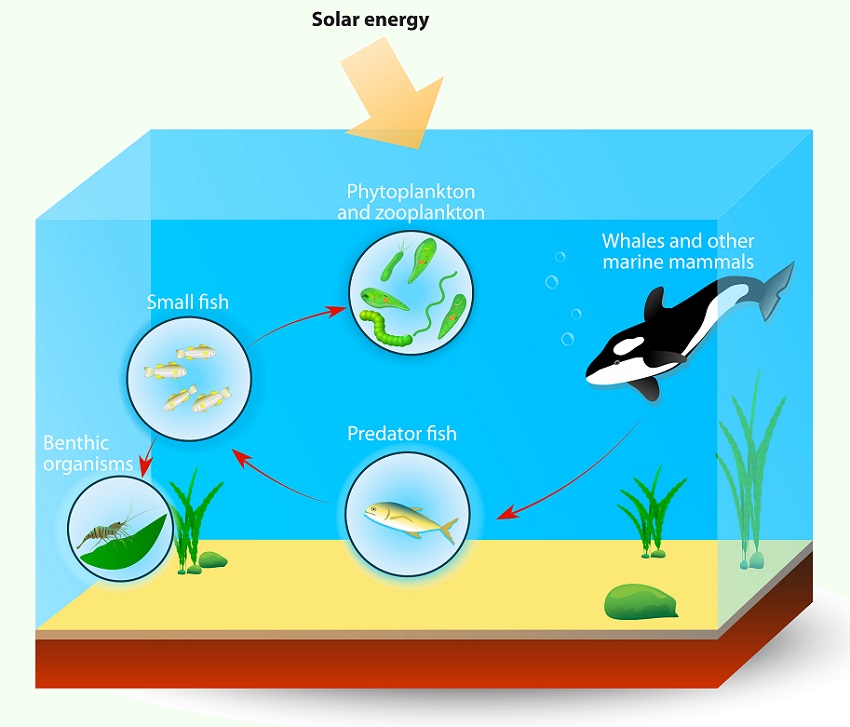[LS2-3] Energy and Matter Cycles
This standard focuses on how matter and energy are obtained and utilized by different levels of an ecosystem – from primary producers to apex predators – and how energy flows through an ecosystem, but matter is continually recycled.
Resources for this Standard:
Here’s the Actual Standard:
Construct and revise an explanation based on evidence for the cycling of matter and flow of energy in aerobic and anaerobic conditions.
Standard Breakdown
This standard has 2 specific parts we can analyze in detail:
Cycling of Matter:
Matter includes many different kinds of substances, many of which occur in cycles throughout the biosphere. These substances include carbon, nitrogen, phosphorus, oxygen, and many other substances are used by organisms as they grow, reproduce, and die. This creates many natural cycles within the biosphere. For example, here is the Carbon Cycle:

We have a lot of evidence that describes the carbon flow throughout nature. We know that photosynthesis operates by taking carbon dioxide out of the air, and using it to create sugars. The process of respiration – which happens in most eukaryotic organisms – releases carbon dioxide after the energy is harvested from the bonds of sugar. However, we also know that humans are altering this cycle with the burning of fossil fuels – adding massive amounts of carbon dioxide to the atmosphere that changes how heat is trapped as well as how plants all over the world grow.
However, there are many other cycles that can be explored by students. Some very interesting cycles are the nitrogen cycle, the water cycle, and the accumulation of toxins in top-level predators.
Flow of Energy:
An important difference is seen in energy in that it does not cycle within an ecosystem. Instead, it enters the system when it is captured by primary producers and exits the system as it is used by a wide variety of organisms. The energy is transformed through the process, being continually transformed into different bonds until it essentially escapes as heat and chemical energy.
The most important processes in nature for the flow of energy are seen in the opposing processes of photosynthesis and respiration. Using a light-powered proton pump, chloroplasts harvest energy from the sun and place it into sugar (glucose molecules). Small organisms and larger animals eat these plants, using the energy to build their bodies. This energy passes through the ecosystem via the food web. Eventually, all the energy not used up by organisms before they die is used up by decomposers in the soil.

The carbon molecules – used to store energy – are released as carbon dioxide by respiration from both plants and animals. This frees up carbon dioxide to be reused in photosynthesis – creating a closed system of carbon dioxide within the biosphere.
However, energy is also present in anaerobic situations – such as near hydrothermal vents. Here, the primary energy source is not the sun but the heat energy given off by hydrothermal vents. Heat energy is stored in sulfur bonds, which can then be accessed by specialized anaerobic bacteria.
A little clarification:
The standard contains this clarification statement:
Emphasis is on conceptual understanding of the role of aerobic and anaerobic respiration in different environments.
Let’s look at this clarification a little closer:
Energy Flow in Ecosystems
The idea here is that whether there is oxygen or no oxygen, ecosystems can be built on any source of energy. Whether that energy is gained through photosynthesis or through some other biochemical process that extracts energy from the environment, this forms the energy basis of an ecosystem.

Depending on how much energy is available determines the overall structure of the ecosystem. Photosynthesis can provide enormous amounts of energy – though this energy is mitigated by other factors such as temperature, elevation, and latitude. Hydrothermal vents support not only small bacterial organisms, but an entire ecosystem of worms, crabs, and fish that have specialized to utilize the energy provide. While other forms of bacteria have evolved to extract energy from a large number of other inorganic sources, few of these bacteria produce large amounts of energy, limiting these ecosystems to a few types of specialized bacteria (such as those found deep within the Earth that extract energy from mineral sources).
What to Avoid
This NGSS standard also contains the following Assessment Boundary:
Assessment does not include the specific chemical processes of either aerobic or anaerobic respiration.
Here’s a little more specificity on what that means:
Specific Chemical Processes:
For this standard, it is unecessary to go into the specific biochemical reactions that aerobic or anaerobic respiration possible. This standard focuses on the bigger picture of how matter and energy flow through an organism – from primary producers to apex predators.
